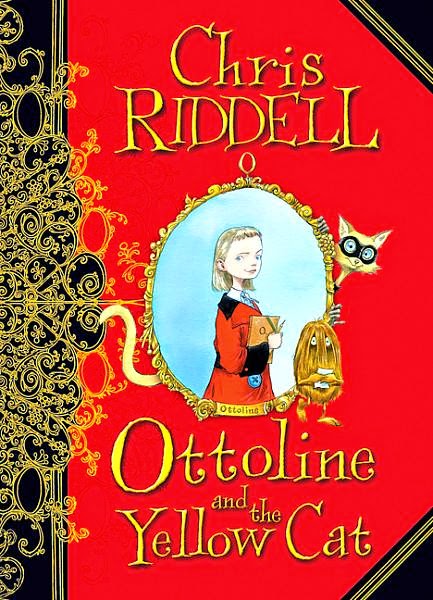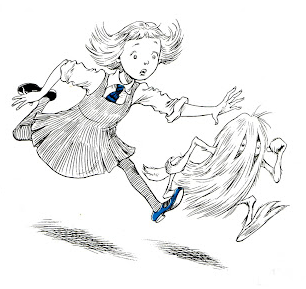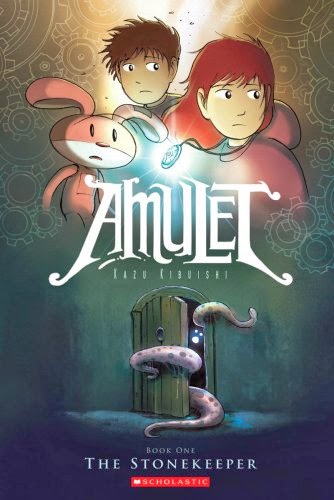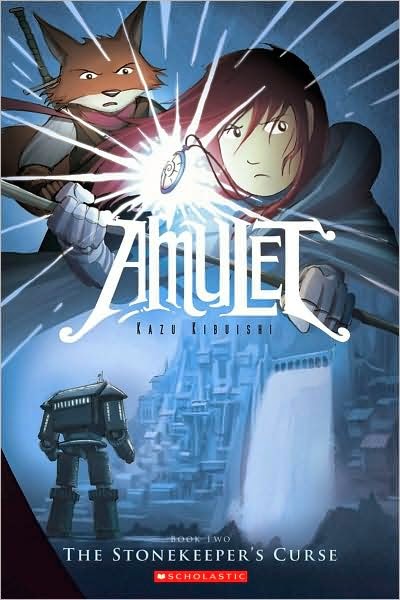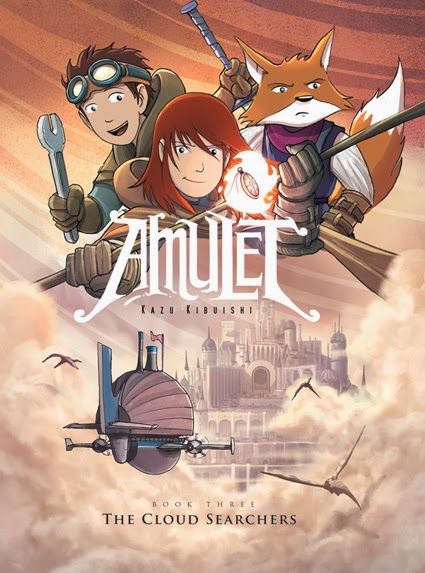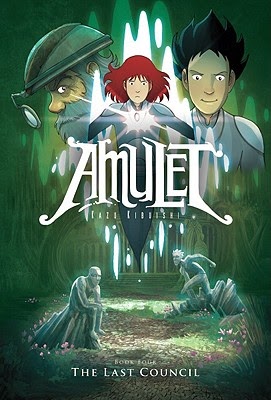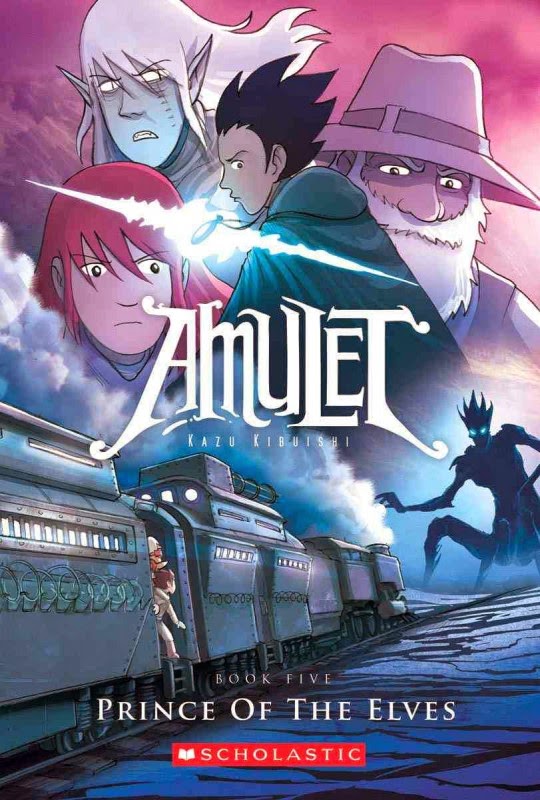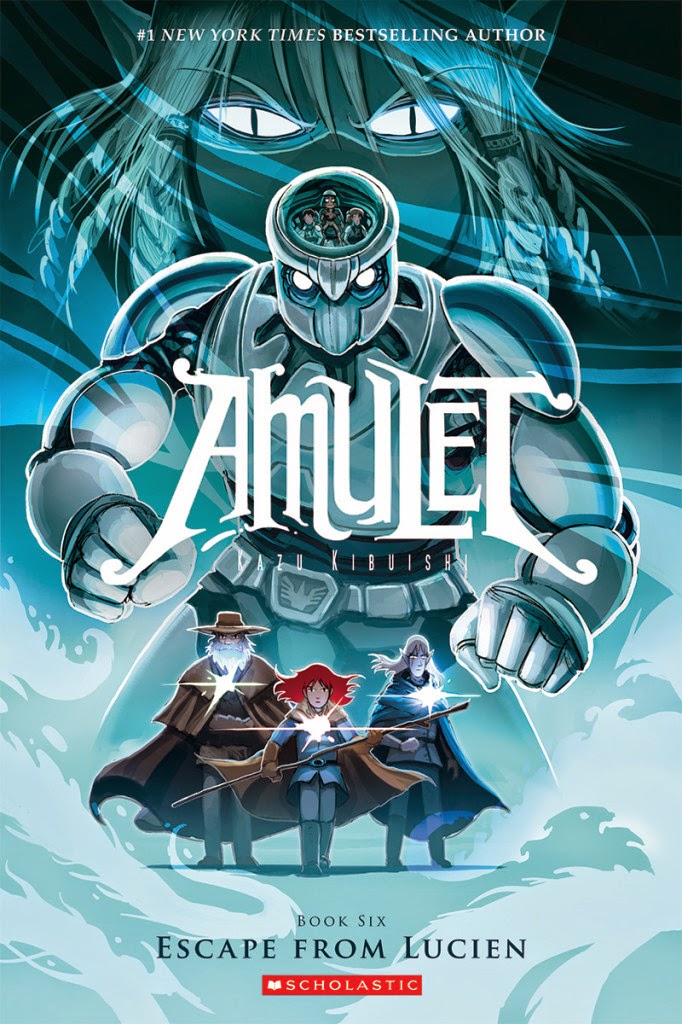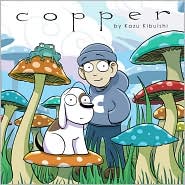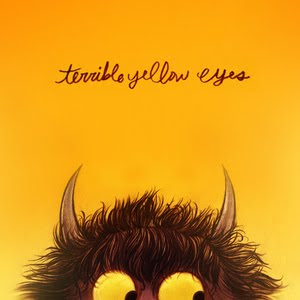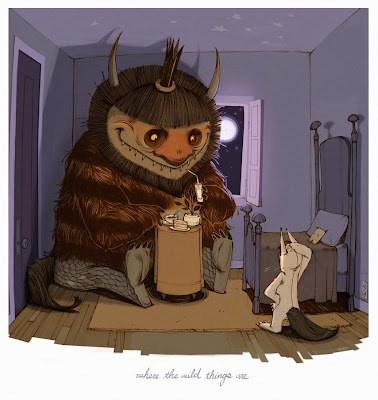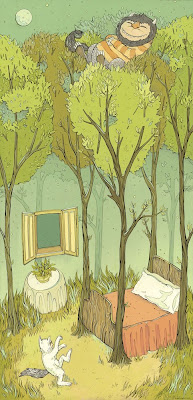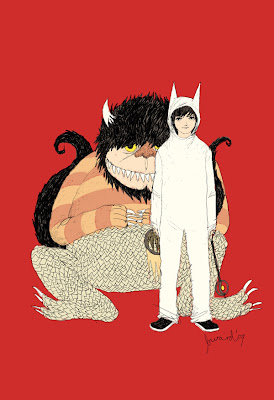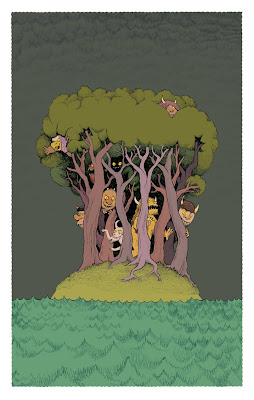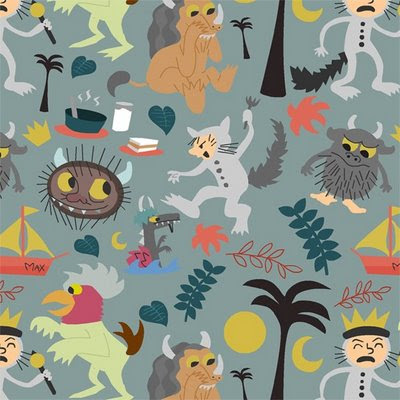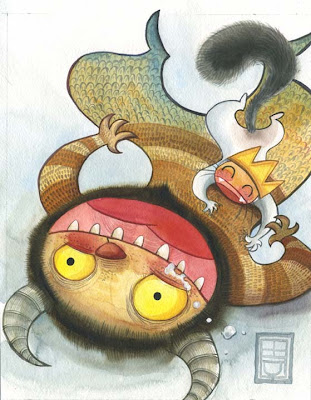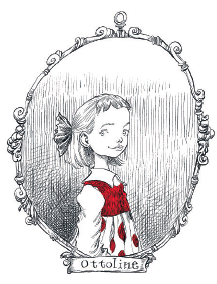 The first book in the Ottoline Series, Ottoline and the Yellow Cat, is now available in paperback. Full of superb illustrations and details, this is a great book for an emerging reader. All the books by the team of Paul Stewart and Chris Riddell that I have ever encountered have knocked my socks off. The combination of creative creatures, wild circumstances and great adventures in their Far-Flung Adventures is pitch perfect for the younger crowd, where are their series for older readers, The Edge Chronicles, adds suspense, life threatening danger and occasional violence and even death. Sort of Tolkein for the pre-teen... Their newest series, Barnaby Grimes is set in a Victorian London. Barnaby, who has a nose for intrigue, is a tick tock lad who jumps from rooftop to rooftop in the poorer, crowded part of the city in which he lives and works. The Ottoline series represents Ridell's first chapter book on his own, and, as to be expected, it is spectacular.
The first book in the Ottoline Series, Ottoline and the Yellow Cat, is now available in paperback. Full of superb illustrations and details, this is a great book for an emerging reader. All the books by the team of Paul Stewart and Chris Riddell that I have ever encountered have knocked my socks off. The combination of creative creatures, wild circumstances and great adventures in their Far-Flung Adventures is pitch perfect for the younger crowd, where are their series for older readers, The Edge Chronicles, adds suspense, life threatening danger and occasional violence and even death. Sort of Tolkein for the pre-teen... Their newest series, Barnaby Grimes is set in a Victorian London. Barnaby, who has a nose for intrigue, is a tick tock lad who jumps from rooftop to rooftop in the poorer, crowded part of the city in which he lives and works. The Ottoline series represents Ridell's first chapter book on his own, and, as to be expected, it is spectacular.
Ottoline and the Yellow Cat is a treasure chest of visual details, oddities, maps and diagrams included, with touches of red highlighting the intricate illustrations (Ottoline Goes to School is accented with blue. No word on what color will brighten Ottoline at Sea, book three). The cast of characters include wonderfully strange creatures, villains, absent parents and disguises. Ottoline lives in in the Pepperpot Building, number 243 with her parents, Professor and Mrs. Brown, who are collectors and world travelers and have amassed such wonders as a four-spouted tea pot collection and a shelf-full of emperor's hats, to name a few. Ottoline herself is a collector (of odd shoes and postcards, all of which are sent to her by her traveling parents) and a graduate of the Academy of Subterfuge.
Mr Munroe, who resembles Cousin Itt from the Addams Family, but with bare-human like feet showing from beneath his hair, cares for Ottoline when her parents are traveling. More than anything, Mr Munroe hates to get wet, take baths and have his hair brushed. However, Ottoline loves to brush his hair when she is in a thinking or planning mood, which happens often because she is a bit of a mystery hound, and Mr Munroe submits to her whim. The relationship between Ottoline and Mr Munroe is very well developed and touching. My favorite part of the book is when, separately and on separate occasions, both Ottoline and Mr Munroe find themselves eavesdropping, but confess that they keep this pastime a secret because they each believe the other would disapprove. Ottoline and the Yellow Cat finds the duo investigating the disappearance of lap dogs and diamonds. After finding a trail of clues, Mr Munroe bravely volunteers to go undercover to crack the case and trap the cat burglar. The climax involves a very funny scene which depends largely on the services of the many businesses employed by the Brown's to keep Ottoline's life running smoothly in their absence. This housekeeping staff includes Marion's Bathroom Supplies, the Smiling Dragon Clothes Folding Co., the Happy Nest Bed Makers and the Home Cooked Meal Company.
Mr Munroe, who resembles Cousin Itt from the Addams Family, but with bare-human like feet showing from beneath his hair, cares for Ottoline when her parents are traveling. More than anything, Mr Munroe hates to get wet, take baths and have his hair brushed. However, Ottoline loves to brush his hair when she is in a thinking or planning mood, which happens often because she is a bit of a mystery hound, and Mr Munroe submits to her whim. The relationship between Ottoline and Mr Munroe is very well developed and touching. My favorite part of the book is when, separately and on separate occasions, both Ottoline and Mr Munroe find themselves eavesdropping, but confess that they keep this pastime a secret because they each believe the other would disapprove. Ottoline and the Yellow Cat finds the duo investigating the disappearance of lap dogs and diamonds. After finding a trail of clues, Mr Munroe bravely volunteers to go undercover to crack the case and trap the cat burglar. The climax involves a very funny scene which depends largely on the services of the many businesses employed by the Brown's to keep Ottoline's life running smoothly in their absence. This housekeeping staff includes Marion's Bathroom Supplies, the Smiling Dragon Clothes Folding Co., the Happy Nest Bed Makers and the Home Cooked Meal Company.
Although different in both plot and illustration style, the Ottoline books remind me of another favorite trilogy of mine, The Fog Mound by Susan Schade and Jon Bueller. Both books combine a great fantasy story combined with a mystery and brilliant illustrations with different colored highlights for each book. To see more of Chris Riddell's excellent illustrations, visit his website. The works of the team of Stewart and Riddell can also be viewed at the great websites for their other series, Far-Flung Adventures and the Edge Chronicles. All three websites are geared towards kids and have Mr Riddell's great illustrations, some animated, as well as some fun games and tons of information about the books.
